
Satureja is a genus of aromatic plants of the family Lamiaceae, related to rosemary and thyme. It is native to North Africa, southern and southeastern Europe, the Middle East, and Central Asia. A few New World species were formerly included in Satureja, but they have all been moved to other genera. Several species are cultivated as culinary herbs called savory, and they have become established in the wild in a few places.
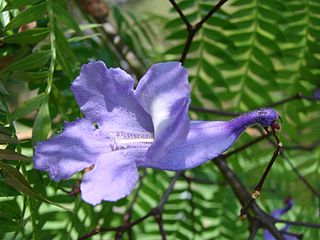
Jacaranda is a genus of 49 species of flowering plants in the family Bignoniaceae, native to tropical and subtropical regions of the Americas while cultivated around the world. The generic name is also used as the common name.
Scrub oak is a common name for several species of small, shrubby oaks. It may refer to:
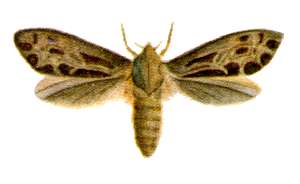
Oncopera is a genus of moths of the family Hepialidae. There are 12 described species, all endemic to Australia. The larvae usually feed on grasses, although that of O. intricata has been recorded on strawberry.
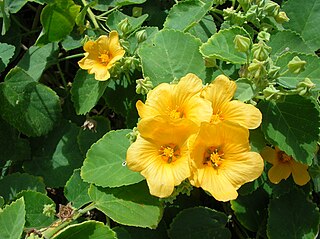
Sida is a genus of flowering plants in the mallow family, Malvaceae. They are distributed in tropical and subtropical regions worldwide, especially in the Americas. Plants of the genus may be known generally as fanpetals or sidas.

Moehringia is a genus of flowering plants in the family Caryophyllaceae. Members of this genus and of some other genera in Caryophyllaceae are commonly called sandworts. They are found only in the north temperate zone. The genus Moehringia was first formally named by Carl Linnaeus in 1753. It is named after the German naturalist Paul Möhring (1710–1792).
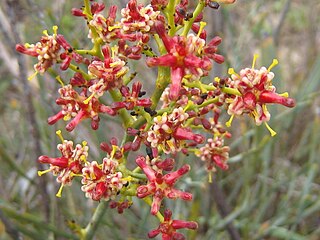
Stirlingia, commonly known as blueboy, is a genus of 7 species in the family Proteaceae, all of which are endemic to Western Australia.

Daviesia, commonly known as bitter-peas, is a genus of about 130 species of flowering plants in the family Fabaceae, and is endemic to Australia. Plants in the genus Daviesia are shrubs or small trees with leaves modified as phyllodes or reduced to scales. The flowers are arranged singly or in groups, usually in leaf axils, the sepals joined at the base with five teeth, the petals usually yellowish with reddish markings and the fruit a pod.

Grevillea intricata is a species of flowering plant in the family Proteaceae and is endemic to the west of Western Australia. It is a densely-branched shrub with tangled branchlets, divided leaves with linear lobes and clusters of pale greenish-white to light cream-coloured flowers.
Verticordia subg. Verticordia is a botanical name for a grouping of similar plant species in the genus Verticordia. This subgenus contains eleven sections, classifying thirty six species, of Alex George's infrageneric arrangement. A number of anatomical features differentiate the contained species from the other two subgenera.

Freyer's pug is a moth of the family Geometridae. The species can be found in Europe, east to the Urals, the Russian Far East, Kazakhstan and China. It is also found in North America.
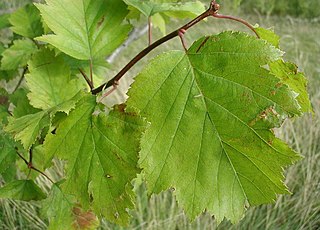
Crataegus intricata is a species of hawthorn known by the common names Copenhagen hawthorn, Lange's thorn and thicket hawthorn. It is native to eastern Canada and the eastern United States. Its fruit are brown to red.

Synaphea is a genus of small shrubs and is endemic to Western Australia. Synapheas have variably shaped leaves but consistently yellow flowers with an unusual pollination mechanism.
Drosera intricata is a scrambling or climbing perennial tuberous species in the carnivorous plant genus Drosera that is endemic to Western Australia. It grows in clay-sand soils on swamp margins, or other habitats that are seasonally wet. D. intricata produces small carnivorous leaves along a glabrous stem that can be 25–40 cm (10–16 in) tall. Its 3-12 yellow flowers emerge from September to October. It gains its species name, intricata, from its twining or winding habit.

Crataegus coccinea, the scarlet hawthorn, is a species of hawthorn around which there is considerable confusion because the name has been misapplied for a long time. It has been shown to be the same as C. pedicellata, and under the rules of botanical nomenclature, the older name should be used.

Drimia is a genus of African, south European and south Asian flowering plants. In the APG IV classification system, it is placed in the family Asparagaceae, subfamily Scilloideae. When broadly circumscribed, the genus includes a number of other genera previously treated separately, including Litanthus, Rhodocodon, Schizobasis and Urginea.
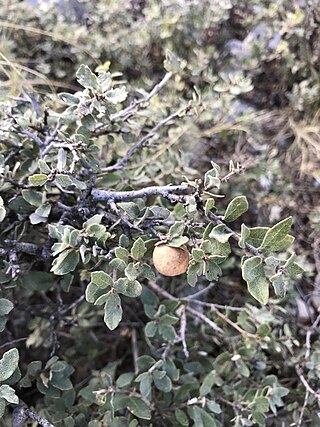
Quercus intricata, common name dwarf oak, intricate oak or Coahuila scrub oak, is a plant species native to northern Mexico and western Texas.
Verticordia sect. Intricata is one of eleven sections in the subgenus Verticordia. It includes three species of plants in the genus Verticordia. Plants in this section are usually bushy shrubs, sometimes cauliflower-like, with greyish leaves and fluffy or woolly pink to red, sometimes white flowers. The sepals have intricately branched lobes and hairy appendages and the stamens and staminodes are joined in a ring structure. When Alex George reviewed the genus in 1991 he formally described this section, publishing the description in the journal Nuytsia. The name Intricata is from the Latin word intricatus meaning "entangled" or "complicated" referring to the intricately divided sepals.
Myrovernix is a genus of flowering plants belonging to the family Asteraceae.
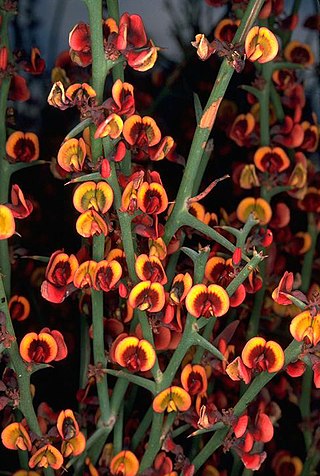
Daviesia intricata is a species of flowering plant in the family Fabaceae and is endemic to the south-west of Western Australia. It is a glabrous shrub with densely tangled branches, sharply-pointed, needle-shaped or flattened phyllodes and apricot-yellow and dark red flowers.














